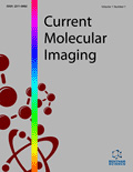Abstract
Among all the preclinical imaging modalities available for scientifist to explore animal models, especially rodents, bioluminescence imaging (BLI), fluorescence and photoacoustic imaging strategies are the only ones that are not derived from medical imaging. Based on a chemical reaction involving an enzyme and its substrate to convert chemical energy into light emission, BLI is relatively recent (~ 15 years). However, it is routinely used in many laboratories with regard to other modalities (MRI, PET, SPECT, CT). Thanks to its excellent sensitivity, the ability to perform high throughput exams, low cost and relative ease of implementation, bioluminescent imaging is widely used either for basic research or the development and screening of new therapies.
After a brief introduction, we will describe the principle of bioluminescence, then discuss the main constraints for quantification, give some examples of routinely performed applications in oncology and finally provide some insights on new biological or technological approaches.Keywords: In vivo bioluminescence, oncology, preclinical imaging, preclinical imaging, fluorescence and photoacoustic imaging, MRI, PET, SPECT, CT, pathophysiological processes
 21
21

